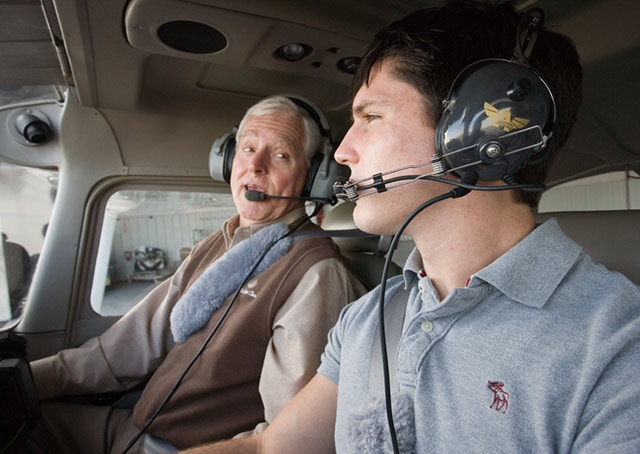
A student member of a local flying club was chatting with a local flight instructor and mentioned that his private pilot practical test was coming right up. He asked the instructor if he had any advice.
The pair had never flown together, but the CFI was happy to share some timeless tips.
Sounds obvious, but make sure your paperwork is in order. Many examiners have had to halt flight exams because of glitches from expired knowledge tests to unmet flight training requirements, to absent aircraft documentation.
Read the detail items—such as the remarks—of weather reports. The examiner will be unimpressed if you announce that visibility is 10 miles with "FEW030 SCT070 SCT200," but miss this part: "RMK AO2 TSB51 SLP124 OCNL LTGCG WNW TS WNW MOV SE MOD CU W-N."
You are the pilot in command, so be totally up-to-date on weather, notams, and temporary flights restrictions. Being PIC means looking after the safety of your passenger, so provide a competent passenger briefing for your examiner.
In flight, don’t tolerate tolerances. If a practical test standards maneuver allows 100 feet of altitude error or 10 degrees leeway on headings, don’t casually consume your margin. Flying at 3,100 feet and a heading of 100 degrees when you are supposed to fly at 3,000 feet on a heading of 090 degrees is not recommended. (News flash: Examiners can read flight instruments.)
If the practical test standards publication mentioned above is unfamiliar, reschedule your test until it isn’t. The PTS is your top-to-bottom checkride guide and should direct your test prep.
During maneuvers and cruise, clearing turns and scanning for traffic are your friends. Going "eyes inside" if receiving radar traffic advisories will cost you.
Show you are thinking ahead, for example, by having the next radio frequency ready, and by being capable of anticipating when air traffic control might call with instructions. Know locations and intentions of other aircraft.
In scenarios from an emergency to a go-around to the "realistic distraction" examiners are required to present, what’s your first responsibility? "Fly the aircraft!" Indeed, fly it every instant from startup to shutdown.
Taxi with controls properly deflected for surface wind conditions. Never fall into the trap of thinking, "There isn’t enough wind to bother with that today." Making such techniques second nature during training will eliminate one thing to worry about on test day, and may pay off big some future windy day!



